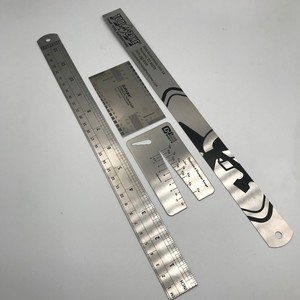Introduction to Designers Ruler
A designer's ruler is an essential tool for architects, graphic designers, drafters, and artists. This precision instrument serves not only to measure distances accurately but also to assist in drawing straight lines, angles, and curves in a variety of design projects. With a blend of functionality and creativity, the designers ruler stands out as a must-have for visual professionals seeking to bring their ideas to life with accuracy and style.
Types of Designers Rulers
Designers rulers come in various forms to cater to different design needs and preferences. Here are the most common types:
- Straight Edge Ruler: A traditional ruler with a straight edge used for drawing lines and measuring lengths.
- Scale Ruler: Features multiple scales on both sides, allowing for easy measuring of objects in different proportions, ideal for architectural drawings.
- Triangle Ruler: A triangular-shaped ruler used to create angles, typically at 30, 60, and 90 degrees, essential in technical drawings.
- Flexible Ruler: Made from bendable materials, perfect for measuring and drawing curves or irregular shapes.
Features and Applications of Designers Ruler
Designers rulers are packed with features that enhance their functionality. Here are some key features and their applications:
- Material Quality: Typically made from plastic, metal, or wood, ensuring durability and longevity.
- Clear Markings: Graduated markings enhance visibility, allowing for precise measurements even from a distance.
- Multiple Scales: Many designers rulers include various scale options for different types of drawing, making them versatile tools.
- Ergonomic Design: Designed with user comfort in mind, with a shape that facilitates easy handling and maneuverability.
Applications of a designers ruler extend across multiple fields:
- Architecture: Essential in creating scale models and detailed blueprints.
- Graphic Design: Useful for layout design and ensuring composition accuracy.
- Fashion Design: Aids in fabric pattern drafting and measurements.
- Engineering: Vital for technical drawing and prototype design.
How to Choose the Right Designers Ruler
Selecting the right designer's ruler depends on your specific needs and the type of projects you undertake. Here are some tips to guide your choice:
- Determine Your Needs: Identify the primary purpose of the ruler – whether for drafting, measuring, or artistic purposes.
- Consider Material: Choose a material that suits your working environment; metal is great for durability, while plastic is lightweight and portable.
- Evaluate Size: Consider the length of the ruler based on your workspace and project scale – larger rulers may be better for grand projects.
- Check for Features: Look for additional features such as built-in scales, erasable markings, or color-coded edges to enhance functionality.
Advantages of Using a Designers Ruler
A designer's ruler offers several advantages that make it an indispensable tool for professionals:
- Precision: Ensures accurate measurements and lines, critical for professional-quality work.
- Versatility: With multiple types and features, they can be used across various disciplines and projects.
- Enhanced Creativity: Allows for easier manipulation of design elements, promoting innovative layouts and arrangements.
- Improved Efficiency: Speeds up the drafting process, enabling designers to focus more on creativity instead of basic measurement tasks.
















































